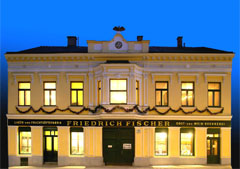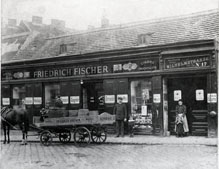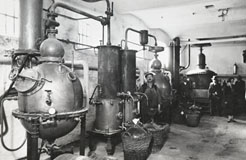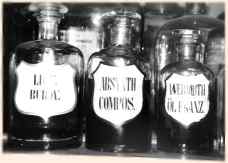
The cult drink of the turn of the century returns
The first mention of an absinthe-like drink was in ancient Greece - Pythagoras and Hippocrates describe its healing properties, its aphrodisiac effect and the increase in creativity they experienced on drinking it.
The original recipe for absinthe as we know it today came from the Swiss sisters Henriot from Neuchâtel. Monsieur Pernod added aniseed in a higher dosage after he had purchased the recipe and had set up production in France.

OLD VIENNA SCHNAPSMUSEUM
No other alcoholic drink stimulated painting and poetry as much as absinthe did. It was an elixir that inspired such artists as Toulouse-Lautrec, Manet, Renoir, Van Gogh and Gaugin, intoxicated fantasy and made perfect verses by such as Baudelaire and Verlaine. Even Oscar Wilde and Ernest Hemingway allowed themselves to be inspired by the drink.
Painters admired "the green fairy" like a lover. The French impressionists seemed to have more absinthe than oxygen in their blood. Even Picasso painted women drinking absinthe and an absinthe glass on one of his canvasses. The most legendary and mysterious absinthe drinker of this time was most certainly MATA HARI. The recent movies "Moulin Rouge" (Nicole Kidman) and "From Hell" (Johnny Depp) show the popularity of this drink.
Whether it was the thujone in the absinthe, the high alcohol content of up to 70%, or the unclean alcohol which is still today often added in former Eastern bloc countries, more and more people suffered hallucinations after excessive absinthe drinking (Van Gogh cut off his own ear when intoxicated on absinthe). As a consequence, the drink was black-listed in Europe and the USA.
Since 1986 absinthe production is once again permitted in EU countries, but it is only recently that the drink has become more widely appreciated.
The original recipe was actually intended to have a medicinal stimulating effect and included several "herbs": grand wormwood, extract of sage, fennel, angelica a few secret ingredients, and natural green coloring with chlorophyll from wormwood pontica and peppermint leaf. That’s why Absinthe it is also called “the green fairy”.



